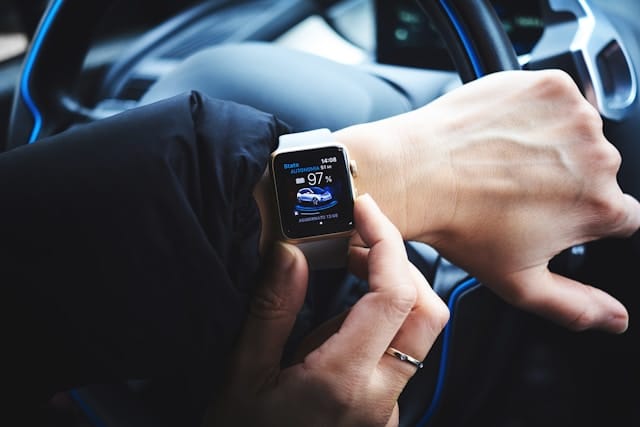What Are the Challenges of Implementing Wearable Tech in UK Corporate Wellness Programs?

Wearable technology has made headway into various sectors, and the health industry has been no exception. From fitness bands to smartwatches, wearable devices are now being used to promote employee wellness in organizations across the globe. However, as businesses in the UK attempt to integrate wearable tech into their wellness programs, they face a myriad of challenges. This article delves into these issues, providing you with a comprehensive understanding of the complexities involved.
Understanding Wearable Technology in Health
Before we delve into the challenges, it is crucial to understand what wearable technology entails and how it correlates with health. Wearable technology refers to electronic devices that are worn on the body, either as an accessory or as a part of the material used in clothing. One of the most common examples of wearable technology is the smartwatch, which many of you may already own.
Also to see : What Is the Impact of Virtual Queuing Technology on UK Amusement Parks’ Customer Experience?
Wearable devices have rapidly evolved, and now have the capability to monitor various aspects of health. These include measuring physical activity, heart rate, sleep patterns, and even stress levels. With the assistance of sensors and data analysis, these devices provide a snapshot of an individual’s health status and lifestyle habits, fostering self-awareness and proactive healthcare.
The Role of Wearable Tech in Corporate Wellness Programs
Wearable technology plays a pivotal role in corporate wellness programs. It offers a digital platform that allows employers to monitor their employee’s health and wellness, promoting a healthier work environment. The data collected from wearables can be used to tailor wellness programs to the specific needs of employees, thereby enhancing their effectiveness.
Also to read : How to Create an Effective Disaster Recovery Plan for UK SMEs?
Despite the numerous advantages of using wearables in corporate wellness programs, a number of challenges arise when attempting to implement this technology. Let’s explore these in more detail.
Data Privacy and Security Concerns
One of the most significant challenges faced when incorporating wearable tech into corporate wellness programs is data privacy and security. Employees may be reluctant to share personal health data, fearing misuse or breaches of confidentiality. This concern is not unfounded, as data breaches have become a common occurrence in the digital age.
Organisations must ensure that they comply with data protection regulations, such as the General Data Protection Regulation (GDPR) in the UK. They need to clearly communicate to employees how their data will be used and stored, and what measures will be taken to safeguard their information.
Technological Limitations and Accuracy of Devices
Not all wearable devices are created equal. Some may have sophisticated sensors and algorithms that provide accurate data, while others may not be as reliable. The variance in the accuracy of these devices poses a significant challenge when it comes to their use in corporate wellness programs.
For instance, if an activity tracker over or underestimates the number of steps an employee takes in a day, the data collected will not provide an accurate reflection of their health status. This could potentially lead to inadequate or inappropriate interventions, which could be counterproductive to the overall aim of the wellness program.
Compliance and Engagement Issues
Another challenge lies in ensuring staff engagement and adherence to the use of wearable tech. Employees may initially be enthusiastic about using a new device, but this excitement can quickly wane, leading to inconsistent usage and thus unreliable data.
Moreover, some employees may resist the use of wearables altogether, either due to privacy concerns, a dislike for the devices, or technological illiteracy. Organizations need to design strategies to maintain engagement and ensure regular use of the devices to make their wellness programs effective.
The Digital Divide
Lastly, the digital divide can pose a significant challenge to the implementation of wearable technology in corporate wellness programs. Not all employees may have equal access to, or proficiency with, digital technology. Age, socio-economic factors, and education levels can all influence an individual’s ability to use and benefit from wearable tech.
To address this, companies must provide adequate training and support for all employees, regardless of their digital literacy levels. This will ensure that all staff can benefit from the wellness program, improving the health and productivity of the entire workforce.
In conclusion, while wearable technology offers promising benefits for corporate wellness programs, organizations must be prepared to address the challenges that come with its implementation. With careful planning, clear communication, and ongoing support, these hurdles can be overcome, leading to healthier, happier, and more productive employees.
Effective Strategies for Overcoming Challenges
Having identified and examined the key challenges of implementing wearable technology in corporate wellness programs, it is essential to explore potential strategies to overcome these issues.
One of the most pressing concerns is data privacy and security. To assuage employee fears and foster trust, organisations must ensure strict adherence to data protection regulations. As mentioned earlier, in the UK, this would involve compliance with the General Data Protection Regulation (GDPR). Companies must be transparent with employees about how their health data will be used, stored, and protected. Regular audits and data protection impact assessments can further strengthen data security measures.
The issue of technological limitations and accuracy of devices can be mitigated by careful selection and testing of wearable devices. Companies can consult reputable sources like Google Scholar, PubMed Crossref, and various free articles to find reviews and comparisons of the accuracy and reliability of different wearable devices.
To tackle the problem of low engagement and compliance, organisations can introduce incentives, such as rewards or recognition for consistent use of the devices. They can also provide support and training to employees who may be less technologically literate.
Finally, addressing the digital divide requires a concerted effort from the organisation. Companies should invest in training and support for all employees, regardless of their digital literacy levels. This can be achieved through workshops, online tutorials, and one-on-one assistance.
Conclusion: The Future of Wearable Tech in Corporate Wellness Programs
Despite the challenges discussed in this article, the potential benefits of wearable technology in corporate wellness programs are substantial. These devices can provide invaluable health data, encourage physical activity, monitor heart rate, and promote overall digital health.
However, as with any technological implementation, there are hurdles to overcome. Privacy and security concerns, technological limitations, engagement issues, and the digital divide all present significant challenges. Yet, with careful planning, stringent data protection measures, and ample support for employees, these challenges can be successfully navigated.
It is critical for organisations in the United Kingdom and beyond to stay abreast of this rapidly evolving field. By doing so, they can harness the power of wearable technology to promote wellness, increase productivity, and foster a healthier work environment. As more research is published in sources like PMC Free, DOI Crossref, and others, strategies for implementing wearable technology will continue to evolve and improve.
In sum, wearable tech offers an exciting opportunity for organisations to enhance their wellness programs. While the road may be bumpy, the destination promises a healthier and more productive workforce. And isn’t that a journey worth taking?
